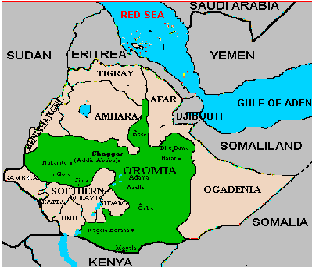By Commonsense
During the 1980s the international community, after years of indecision, finally came to enforce a stringent regime of economic and diplomatic pressure that was beginning to bite. A sustained campaign of civil disobedience and political action waged by the United Democratic Front was beginning to be lethally effective. Attacks by Umkhonto we Sizwe, ANC’s armed wing, mainly symbolic, were getting unnervingly frequent. In short, international pressure, popular action and the insurgency fed on each other to make minority rule untenable and its downfall imminent.
Against this backdrop, the apartheid regime still retained control of a highly efficient and well-equipped army and security force. However, it was becoming obvious that this could not forestall the inevitable--- certain defeat. Time for Afrikaners to make a tough decision: go on fighting, risking utter destruction, or negotiate a peaceful and win-win way out---ditto.
A comedy by Robin Williams, the US Comedian, captured the essence of the dire situation faced by the Apartheid regime. He related an anecdote about an encounter between Lester Maddox, the segregationist former Georgia Governor and an Afrikaner leader.
Maddox: “How many whites are there in South Africa?”
Afrikaner Leader: “About 3.5 million.”
Maddox: “How many blacks?”
Afrikaner Leader: “20 to 30 million.”
Maddox: “Does Custer ring a bell to you?”
Maddox was allegedly referring to Armstrong Custer, a flamboyant US military man at the head of an anti-Indian expedition in 1876. Contemptuous of their military prowess and certain of his glorious victory, Custer ordered his heavily outnumbered Seventh Cavalry to battle. Moved by the brutality of the attack and what awaited them, thousands of Indian warriors (read civilians) forced Custer's unit back onto a ridge, surrounded them, and wiped them out--- all of them.
The victory by the Indians did not last long. That is not the gist of the story. No analogy is a perfect fit but the story of Custer’s blunder, a major fiasco in US military history, and the wise choice made by Afrikaners are relevant to the situation in Ethiopia. Today the TPLF minority regime has succeeded in alienating everybody --- not just in urban areas but also the countryside---even in its home base of Tigrai (7% of the population). In days past TPLF could count on the magic of divide and rule--- pitting one group against the other and then posing as the arbiter.
Despite skepticism by some quarters, mostly unfounded, the formation of the Alliance for Freedom and Democracy puts this tactic to a real test. Granted, TPLF still controls the military and security forces. But seriously, how long before its generals realized that in the not distant future they may be facing the fate of Custer? For sure, the generals may dismiss this possibility, at least for now, but the rank and file is certain to weigh its options. Wise enough AFD is not asking for TPLF’s destruction. According to its public pronouncements it would settle for the fulfillment of a modest demand: TPLF’s commitment to dialogue and good-faith negotiation.
But if TPLF, not known for its far-sightedness, rejects this magnanimous gesture and continues with repression, “Does Custer ring a bell?” This is only Commonsense.
Location: Horn of Africa; in what is today Ethiopia. Oromia is approximately located between 3 degree and 15 degree N latitude and 33 degree and 40 degree longitude. Size 375,000 Square Miles, or, 600,000 square kilometers; Larger than France, Italy, Switzerland, Belgium & the Netherlands combined. Population 40 million; 3rd. largest nationality in Africa; single largest nationality in East Africa.
WELCOME TO OROMONET
The Home of Oromo Views & headline News from the Horn of Africa
Gabcast! Gotoota Oromo Haa Yaadannu. #17 - Wallee.
Gabcast! Gotoota Oromo Haa Yaadannu. #17 - Wallee.

No comments:
Post a Comment
I am responsible for my posting.